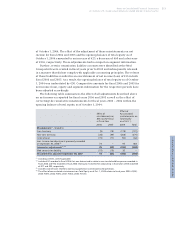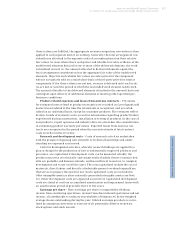Siemens 2007 Annual Report Download - page 220
Download and view the complete annual report
Please find page 220 of the 2007 Siemens annual report below. You can navigate through the pages in the report by either clicking on the pages listed below, or by using the keyword search tool below to find specific information within the annual report.-
 1
1 -
 2
2 -
 3
3 -
 4
4 -
 5
5 -
 6
6 -
 7
7 -
 8
8 -
 9
9 -
 10
10 -
 11
11 -
 12
12 -
 13
13 -
 14
14 -
 15
15 -
 16
16 -
 17
17 -
 18
18 -
 19
19 -
 20
20 -
 21
21 -
 22
22 -
 23
23 -
 24
24 -
 25
25 -
 26
26 -
 27
27 -
 28
28 -
 29
29 -
 30
30 -
 31
31 -
 32
32 -
 33
33 -
 34
34 -
 35
35 -
 36
36 -
 37
37 -
 38
38 -
 39
39 -
 40
40 -
 41
41 -
 42
42 -
 43
43 -
 44
44 -
 45
45 -
 46
46 -
 47
47 -
 48
48 -
 49
49 -
 50
50 -
 51
51 -
 52
52 -
 53
53 -
 54
54 -
 55
55 -
 56
56 -
 57
57 -
 58
58 -
 59
59 -
 60
60 -
 61
61 -
 62
62 -
 63
63 -
 64
64 -
 65
65 -
 66
66 -
 67
67 -
 68
68 -
 69
69 -
 70
70 -
 71
71 -
 72
72 -
 73
73 -
 74
74 -
 75
75 -
 76
76 -
 77
77 -
 78
78 -
 79
79 -
 80
80 -
 81
81 -
 82
82 -
 83
83 -
 84
84 -
 85
85 -
 86
86 -
 87
87 -
 88
88 -
 89
89 -
 90
90 -
 91
91 -
 92
92 -
 93
93 -
 94
94 -
 95
95 -
 96
96 -
 97
97 -
 98
98 -
 99
99 -
 100
100 -
 101
101 -
 102
102 -
 103
103 -
 104
104 -
 105
105 -
 106
106 -
 107
107 -
 108
108 -
 109
109 -
 110
110 -
 111
111 -
 112
112 -
 113
113 -
 114
114 -
 115
115 -
 116
116 -
 117
117 -
 118
118 -
 119
119 -
 120
120 -
 121
121 -
 122
122 -
 123
123 -
 124
124 -
 125
125 -
 126
126 -
 127
127 -
 128
128 -
 129
129 -
 130
130 -
 131
131 -
 132
132 -
 133
133 -
 134
134 -
 135
135 -
 136
136 -
 137
137 -
 138
138 -
 139
139 -
 140
140 -
 141
141 -
 142
142 -
 143
143 -
 144
144 -
 145
145 -
 146
146 -
 147
147 -
 148
148 -
 149
149 -
 150
150 -
 151
151 -
 152
152 -
 153
153 -
 154
154 -
 155
155 -
 156
156 -
 157
157 -
 158
158 -
 159
159 -
 160
160 -
 161
161 -
 162
162 -
 163
163 -
 164
164 -
 165
165 -
 166
166 -
 167
167 -
 168
168 -
 169
169 -
 170
170 -
 171
171 -
 172
172 -
 173
173 -
 174
174 -
 175
175 -
 176
176 -
 177
177 -
 178
178 -
 179
179 -
 180
180 -
 181
181 -
 182
182 -
 183
183 -
 184
184 -
 185
185 -
 186
186 -
 187
187 -
 188
188 -
 189
189 -
 190
190 -
 191
191 -
 192
192 -
 193
193 -
 194
194 -
 195
195 -
 196
196 -
 197
197 -
 198
198 -
 199
199 -
 200
200 -
 201
201 -
 202
202 -
 203
203 -
 204
204 -
 205
205 -
 206
206 -
 207
207 -
 208
208 -
 209
209 -
 210
210 -
 211
211 -
 212
212 -
 213
213 -
 214
214 -
 215
215 -
 216
216 -
 217
217 -
 218
218 -
 219
219 -
 220
220 -
 221
221 -
 222
222 -
 223
223 -
 224
224 -
 225
225 -
 226
226 -
 227
227 -
 228
228 -
 229
229 -
 230
230 -
 231
231 -
 232
232 -
 233
233 -
 234
234 -
 235
235 -
 236
236 -
 237
237 -
 238
238 -
 239
239 -
 240
240 -
 241
241 -
 242
242 -
 243
243 -
 244
244 -
 245
245 -
 246
246 -
 247
247 -
 248
248 -
 249
249 -
 250
250 -
 251
251 -
 252
252 -
 253
253 -
 254
254 -
 255
255 -
 256
256 -
 257
257 -
 258
258 -
 259
259 -
 260
260 -
 261
261 -
 262
262 -
 263
263 -
 264
264 -
 265
265 -
 266
266 -
 267
267 -
 268
268 -
 269
269 -
 270
270 -
 271
271 -
 272
272 -
 273
273 -
 274
274 -
 275
275 -
 276
276 -
 277
277 -
 278
278 -
 279
279 -
 280
280 -
 281
281 -
 282
282 -
 283
283 -
 284
284 -
 285
285 -
 286
286 -
 287
287 -
 288
288 -
 289
289 -
 290
290 -
 291
291 -
 292
292 -
 293
293 -
 294
294 -
 295
295 -
 296
296 -
 297
297 -
 298
298 -
 299
299 -
 300
300 -
 301
301 -
 302
302 -
 303
303 -
 304
304 -
 305
305 -
 306
306 -
 307
307 -
 308
308 -
 309
309 -
 310
310 -
 311
311 -
 312
312 -
 313
313 -
 314
314 -
 315
315 -
 316
316 -
 317
317 -
 318
318 -
 319
319 -
 320
320 -
 321
321 -
 322
322 -
 323
323 -
 324
324 -
 325
325 -
 326
326 -
 327
327 -
 328
328 -
 329
329 -
 330
330 -
 331
331 -
 332
332 -
 333
333 -
 334
334 -
 335
335 -
 336
336
 |
 |
220 Notes to Consolidated Financial Statements
(in millions of €, except where otherwise stated and per share amounts)
Provisions – A provision is recognized in the balance sheet when the Company
has a present legal or constructive obligation as a result of a past event, it is prob-
able that an outfl ow of economic benefi ts will be required to settle the obligation
and a reliable estimate can be made of the amount of the obligation. If the effect is
material, provisions are recognized at present value by discounting the expected
future cash fl ows at a pre-tax rate that refl ects current market assessments of the
time value of money. Provisions for onerous contracts are measured at the lower
of the expected cost of fulfi lling the contract and the expected cost of terminating
the contract. Additions to provisions are generally recognized in the income state-
ment. The present value of legal obligations associated with the retirement of
property, plant and equipment (asset retirement obligations) that result from the
acquisition, construction, development or normal use of an asset is added to the
carrying amount of the associated asset. The additional carrying amount is depre-
ciated over the life of the asset. If the asset retirement obligation is settled for
other than the carrying amount of the liability, the Company recognizes a gain
or loss on settlement.
Financial instruments – A fi nancial instrument is any contract that gives
rise to a fi nancial asset of one entity and a fi nancial liability or equity instrument
of another entity. Financial assets of the Company mainly include cash and cash
equivalents, available-for-sale fi nancial assets, trade receivables, loans receiv-
able, fi nance lease receivables and derivative fi nancial instruments with a posi-
tive fair value. Financial liabilities of the Company mainly comprise notes and
bonds, loans from banks, commercial paper, trade payables, fi nance lease pay-
ables and derivative fi nancial instruments with a negative fair value.
Financial instruments are recognized on the balance sheet when Siemens
becomes a party to the contractual obligations of the instrument. For regular way
purchases or sales of fi nancial assets, i.e. purchases or sales under a contract
whose terms require delivery of the asset within the time frame established gen-
erally by regulation or convention in the marketplace concerned, the trade date
is applied.
Initially, fi nancial instruments are recognized at their fair value. Transaction
costs directly attributable to the acquisition or issue of fi nancial instruments are
only recognized in determining the carrying amount, if the fi nancial instruments
are not measured at fair value through profi t or loss. Finance lease receivables are
recognized at an amount equal to the net investment in the lease. Subsequently,
fi nancial assets and liabilities are measured according to the category – cash and
cash equivalents, available-for-sale fi nancial assets, loans and receivables, fi nan-
cial liabilities measured at amortized cost or fi nancial assets and liabilities classi-
fi ed as held for trading – to which they are assigned.
Cash and cash equivalents – The Company considers all highly liquid invest-
ments with less than three months maturity from the date of acquisition to be
cash equivalents. Cash and cash equivalents are measured at cost.
